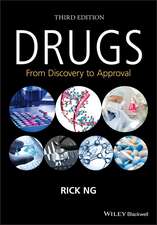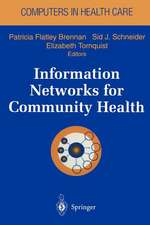Biomechanical Models for Soft Tissue Simulation: ESPRIT Basic Research Series
Autor Walter Maurel, Yin Wu, Nadia Magnenat Thalmann, Daniel Thalmannen Limba Engleză Paperback – 18 apr 2014
Preț: 327.44 lei
Preț vechi: 409.30 lei
-20% Nou
Puncte Express: 491
Preț estimativ în valută:
62.68€ • 68.10$ • 52.68£
62.68€ • 68.10$ • 52.68£
Carte tipărită la comandă
Livrare economică 21 aprilie-05 mai
Preluare comenzi: 021 569.72.76
Specificații
ISBN-13: 9783662035917
ISBN-10: 366203591X
Pagini: 196
Ilustrații: XVIII, 174 p. 5 illus.
Dimensiuni: 155 x 235 x 10 mm
Greutate: 0.28 kg
Ediția:1998
Editura: Springer Berlin, Heidelberg
Colecția Springer
Seria ESPRIT Basic Research Series
Locul publicării:Berlin, Heidelberg, Germany
ISBN-10: 366203591X
Pagini: 196
Ilustrații: XVIII, 174 p. 5 illus.
Dimensiuni: 155 x 235 x 10 mm
Greutate: 0.28 kg
Ediția:1998
Editura: Springer Berlin, Heidelberg
Colecția Springer
Seria ESPRIT Basic Research Series
Locul publicării:Berlin, Heidelberg, Germany
Public țintă
Professional/practitionerCuprins
Soft Tissue Physiology.- Theoretical Mechanics.- Resolution Methods.- Constitutive Modeling.- Muscle Contraction Modeling.- Application Perspectives.- Appendix.
Textul de pe ultima copertă
Numerous experiments reported in the biomechanical literature have shown that soft tissues are highly nonlinear viscoelastic materials. Attempts to model their mechanical behaviour have led to different kinds of mathematical relationships depending on the approach adopted. The use of these models for the realistic simulation of skeletal soft tissues requires basic knowledge of the theory of nonlinear mechanics as well as knowledge of the associated incremental finite element methods. Although many documents have been published in these different areas, few of them give enough details to understand how the models are related to the underlying mechanical theory and how incremental methods are applied to achieve finite element simulations.
This report has been developed, as part of the European Esprit project CHARM, to provide an overview of the available models in light of theoretical mechanics and finite element methods, for the realistic simulation of the human muscles, tendons and skin.
This report has been developed, as part of the European Esprit project CHARM, to provide an overview of the available models in light of theoretical mechanics and finite element methods, for the realistic simulation of the human muscles, tendons and skin.
Caracteristici
How to simulate human soft tissue on computer - useful for both medical and computer animation communities






























